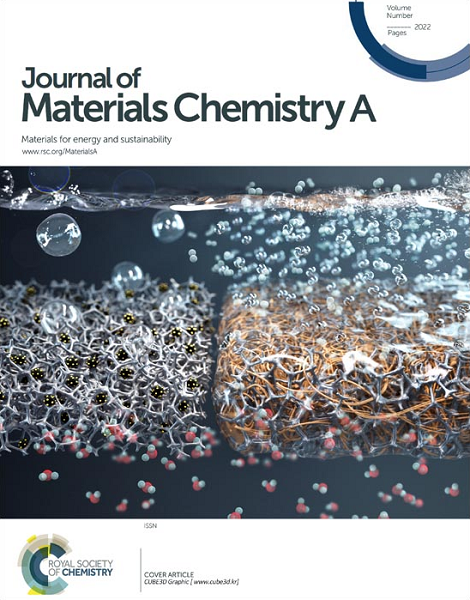粘弹性可控动态硼酸酯聚二甲基硅氧烷网络增强弹性体能量耗散
IF 9.5
2区 材料科学
Q1 CHEMISTRY, PHYSICAL
引用次数: 0
摘要
基于硼硅氧烷的材料,如聚硼硅氧烷(PBS),由于其剪切硬化行为,是理想的冲击保护材料,可以有效地防止伤害。目前的策略依赖于将它们与功能性填料或支架混合,以增强抗冲击性能或实现特定功能。然而,由于硼硅氧烷基材料的结构-性能关系不明确,阻碍了其进一步发展。在此,我们利用粘弹性可控的动态硼酸盐PDMS网络(PPDBS)来构建具有优异能量耗散性能的PPDBS/PDMS双网络弹性体(sse)。网络的超高能量耗散特性是由于网络的快速特性松弛和高内摩擦。我们发现,ssi不仅在宽频率(0.01 Hz-50 Hz)和温度范围(-20°C-140°C)内表现出优异的阻尼性能(tan δ>0.3),而且与大多数商业材料(包括PBS)相比,还表现出优异的抗冲击性能。这项工作为高性能冲击保护和阻尼材料的设计开辟了一条新的途径。本文章由计算机程序翻译,如有差异,请以英文原文为准。
Viscoelasticity-Controllable Dynamic Borate Polydimethylsiloxane Network For Enhancing Energy Dissipation of Elastomers
Borosiloxane-based materials, such as polyborosiloxane (PBS) are ideally utilized as impact-protective materials due to the shear-stiffening behaviors, providing effective protection against injury. Current strategies rely on blending them with functional fillers or scaffolds to enhance impact-protective performance or achieve specific functionalities. However, the unclear structure-property relationships of borosiloxane-based materials have hindered their further development. Herein, we utilize a viscoelasticity-controllable dynamic borate PDMS network (PPDBS) for constructing PPDBS/PDMS double-network elastomers (SSEs) that exhibiting excellent energy dissipation property. The ultrahigh energy dissipation characteristic of SSEs are attributed to the rapid characteristic relaxation and high internal friction inherent to the network. We found that SSEs not only exhibit excellent damping property (tan δ>0.3) over a broad frequency (0.01 Hz-50 Hz) and temperature range (-20 °C-140 °C), but also demonstrate superior impact-protective performance compared with most commercial materials, including PBS. This work opens up a new avenue for the design of high-performance impact-protective and damping materials.
求助全文
通过发布文献求助,成功后即可免费获取论文全文。
去求助
来源期刊

Journal of Materials Chemistry A
CHEMISTRY, PHYSICAL-ENERGY & FUELS
CiteScore
19.50
自引率
5.00%
发文量
1892
审稿时长
1.5 months
期刊介绍:
The Journal of Materials Chemistry A, B & C covers a wide range of high-quality studies in the field of materials chemistry, with each section focusing on specific applications of the materials studied. Journal of Materials Chemistry A emphasizes applications in energy and sustainability, including topics such as artificial photosynthesis, batteries, and fuel cells. Journal of Materials Chemistry B focuses on applications in biology and medicine, while Journal of Materials Chemistry C covers applications in optical, magnetic, and electronic devices. Example topic areas within the scope of Journal of Materials Chemistry A include catalysis, green/sustainable materials, sensors, and water treatment, among others.
 求助内容:
求助内容: 应助结果提醒方式:
应助结果提醒方式:


